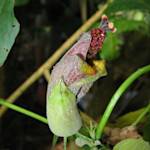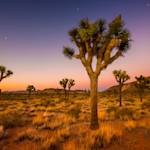Quindío Wax Palm
2020 CE • Andes
"The Quindío wax palm is the World’s largest palm. Found in montane forests of the Andes it can grow up to 60 metres tall . . . The species is the national tree and emblem of Colombia, where it is found in the coffee growing region of Quindío. Traditionally, the young leaves were used during ‘Semana Santa’ or Holy Week – an important cultural festival. However, recently a ban has been introduced to stop the practice due to the large quantities collected, which had reached a commercial scale. The tree is also used to make fencing, beams and walls of houses across its range. The wax was used for making candles and matches until the middle of the 19th Century. The extraction of the wax often involved felling the trees. In Peru, adult trees are still exploited for wax, which are often combined with material to make components for torches and lighting." Currently, "its population is threatened by the intensive deforestation for conversion to pasture as well as disease. Although Colombian legislation forbids the logging of this species, large parts of the remaining population are found in extensive pastures as mature individuals incapable of reproduce in these deforested landscapes where grazing is intensive."
"Quindío wax palm," Global Trees Campaign, 2020.
Image: The Quindío wax palm of the Cocora valley, Rita Willaer via Flickr, CC BY-NC-SA 2.0 DEED Attribution-NonCommercial-ShareAlike 2.0 Generic


Learn about Maya Lin’s fifth and final memorial: a multi-platform science based artwork that presents an ecological history of our world - past, present, and future.

Discover ecological histories and stories of former abundance, loss, and recovery on the map of memory.

Learn how we can reduce our emissions and protect and restore species and habitats – around the world.

See how art can help us rethink the problems we face, and give us hope that each one of us can make a difference.

Help make a global memorial something personal and close to home. Share your stories of the natural world.


